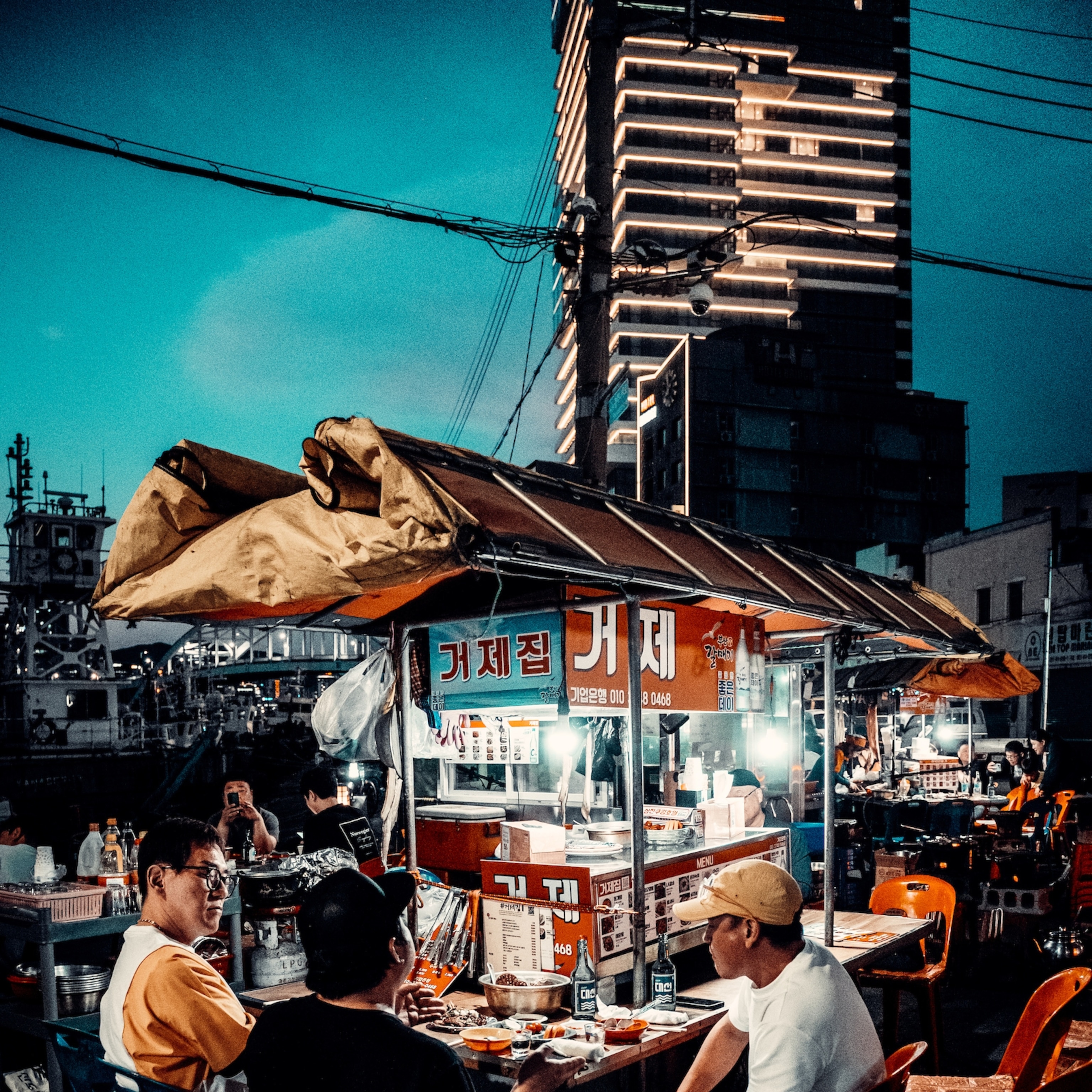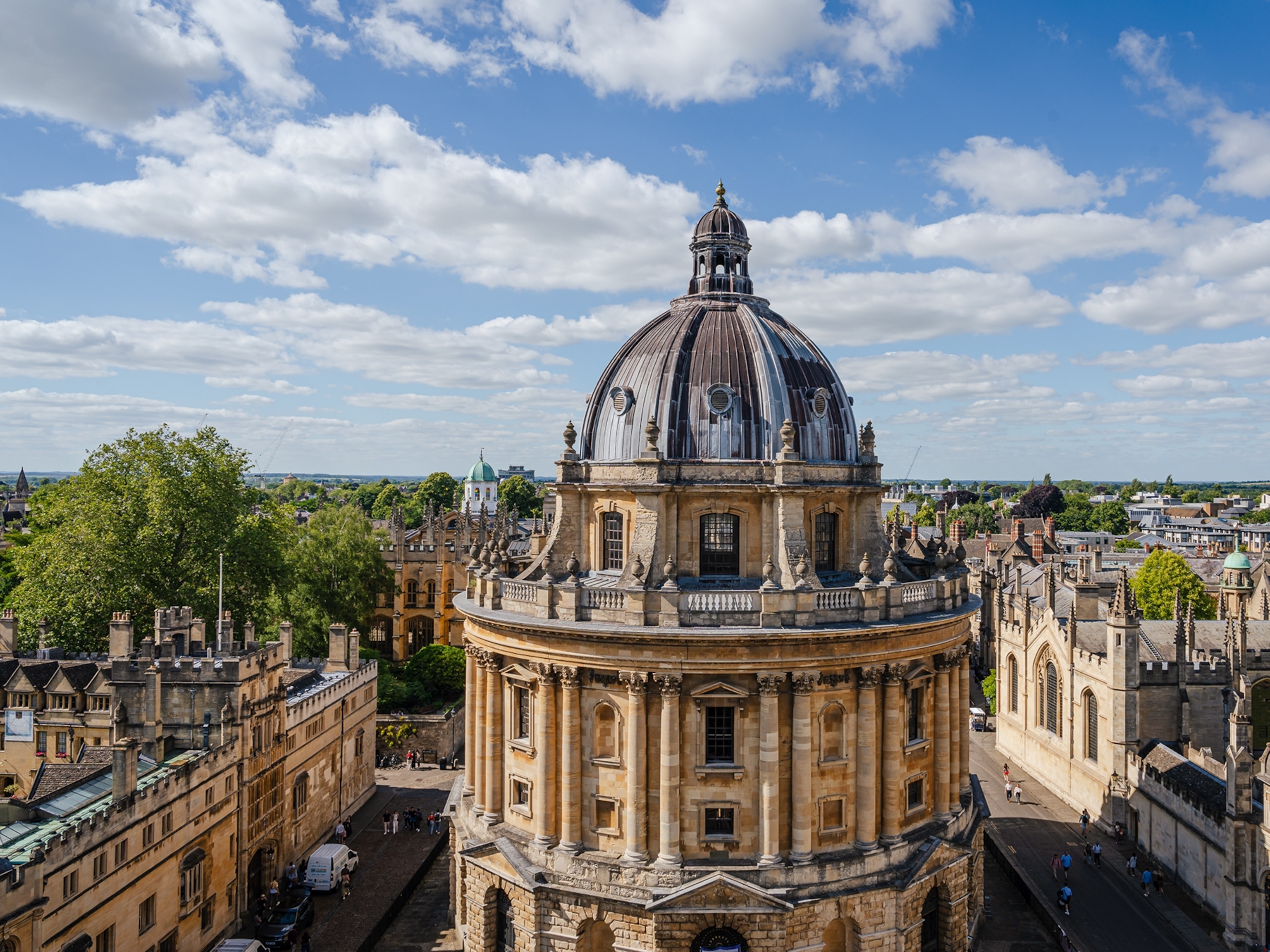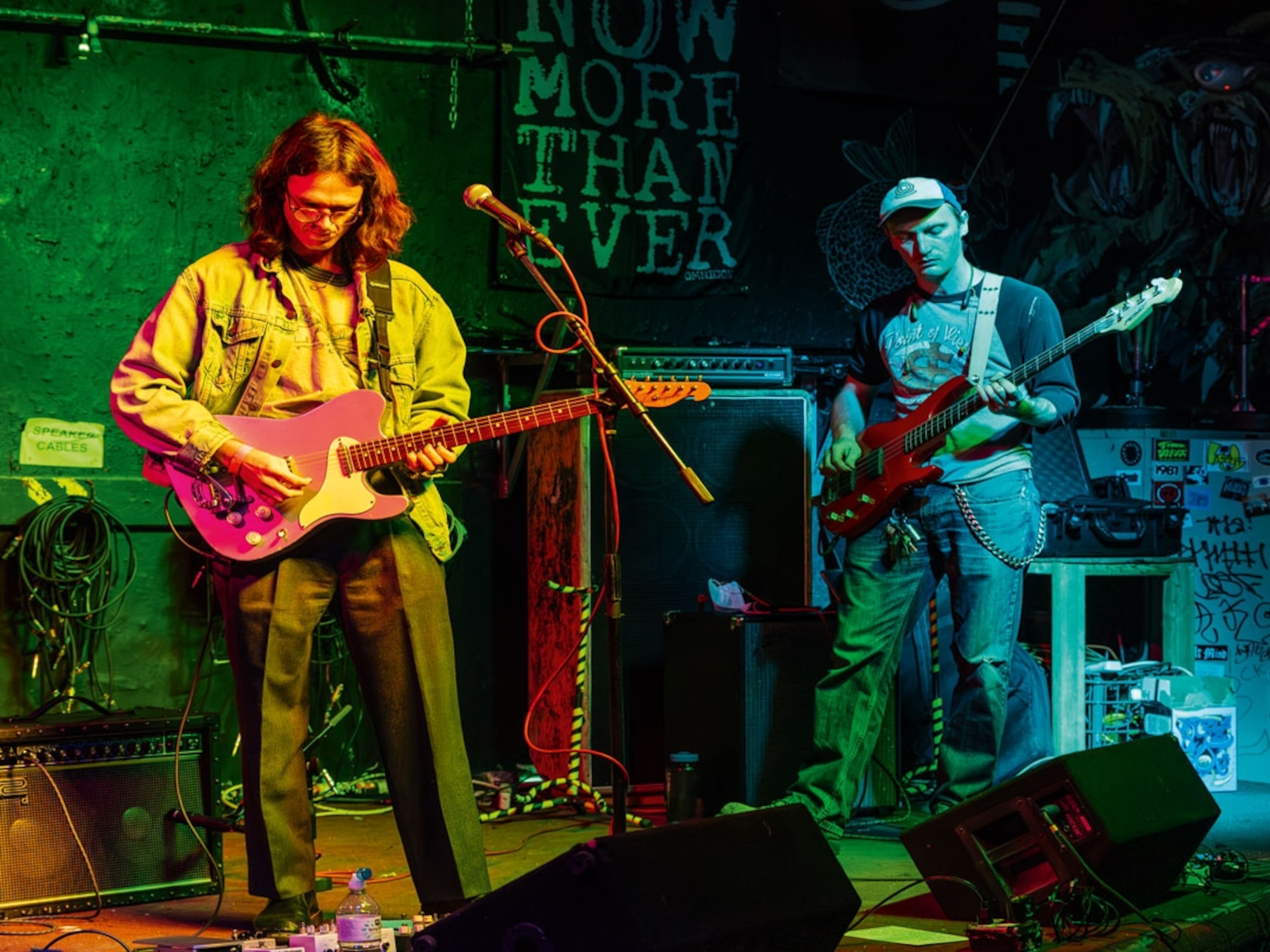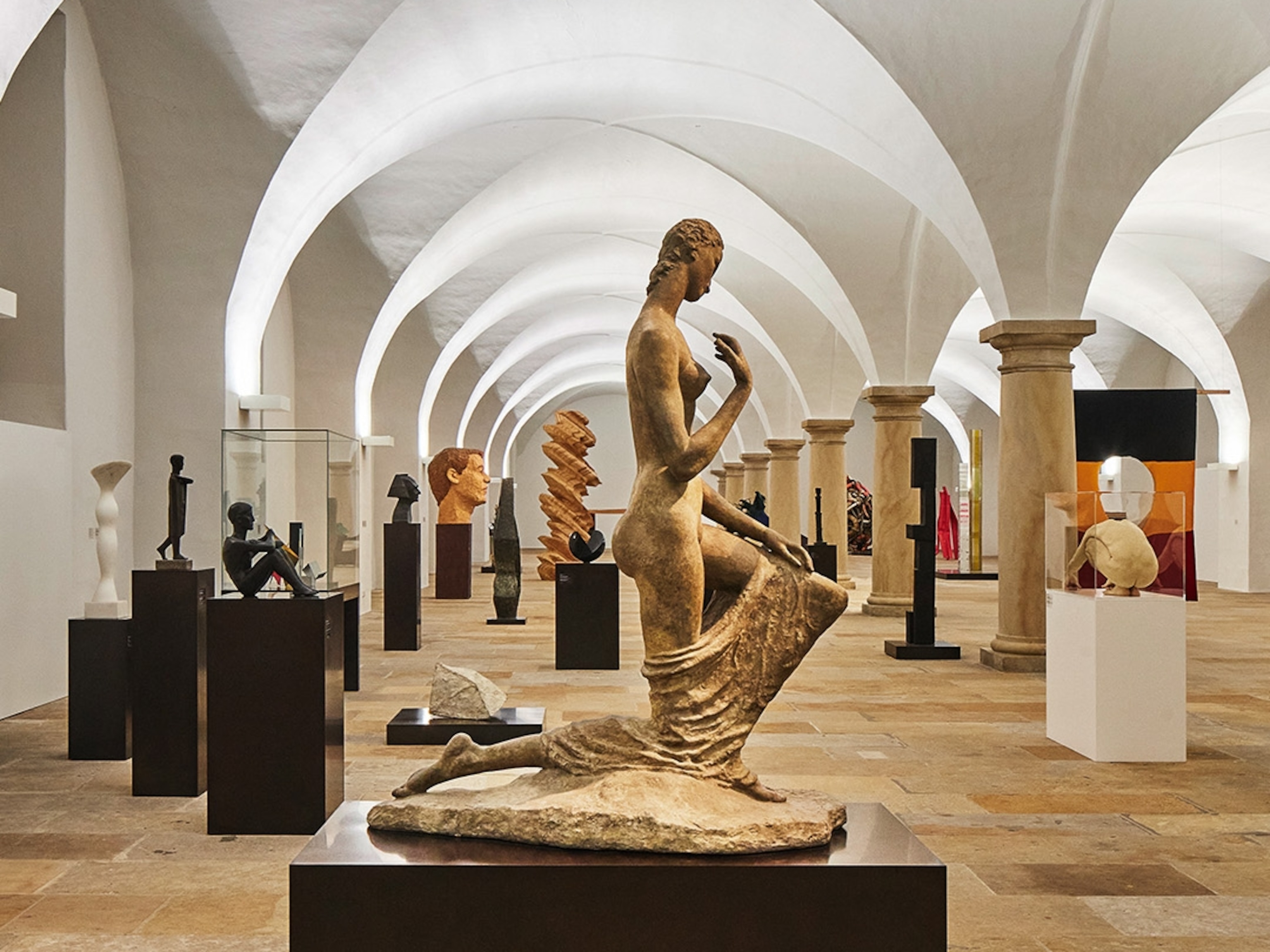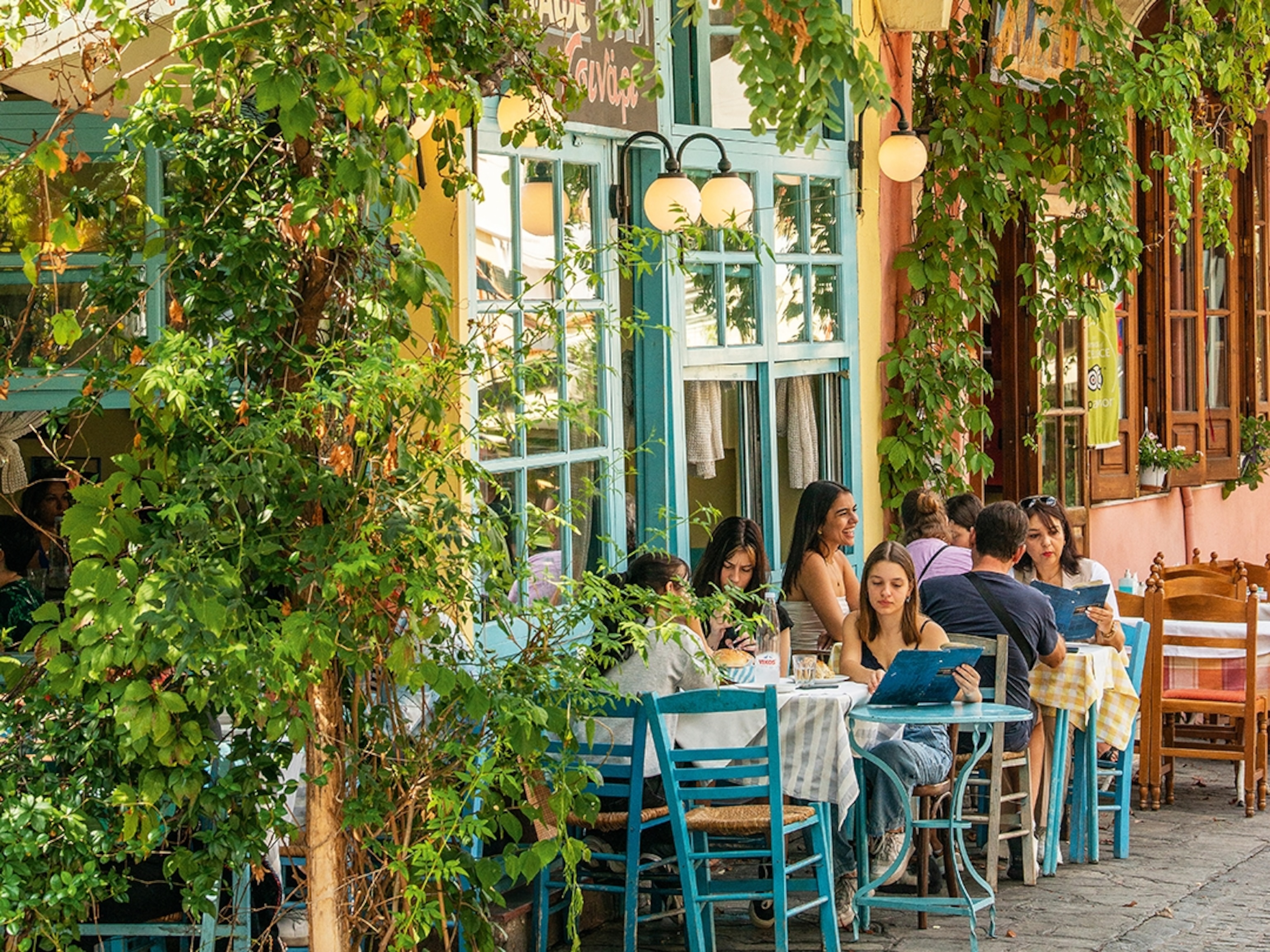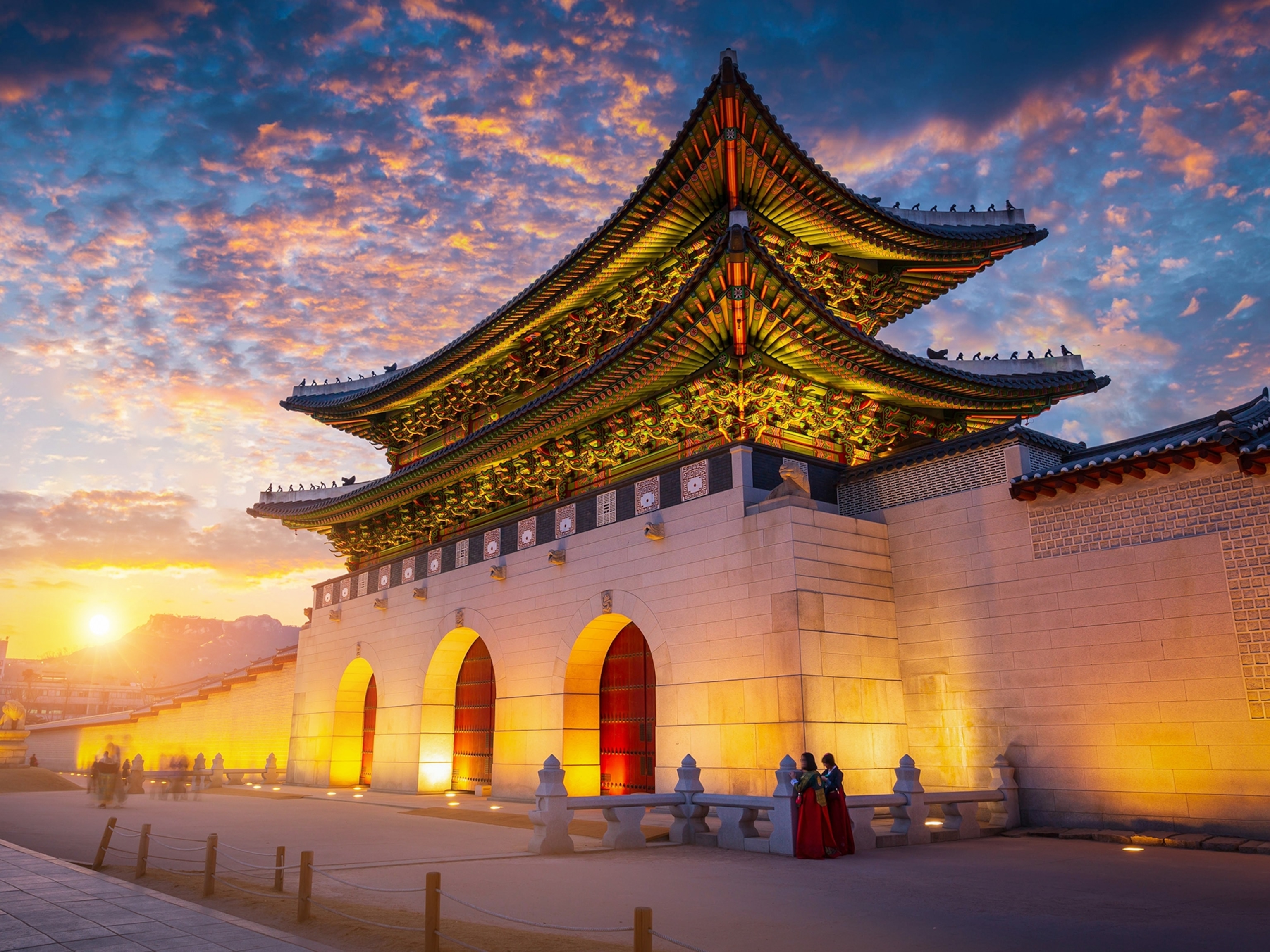Seoul's youth culture is taking over the world. Here's why
From impromptu K-Pop dances and retro vinyl bars to outlandish cakes and raining cafes, youth culture takes on many forms on the streets of Seoul.
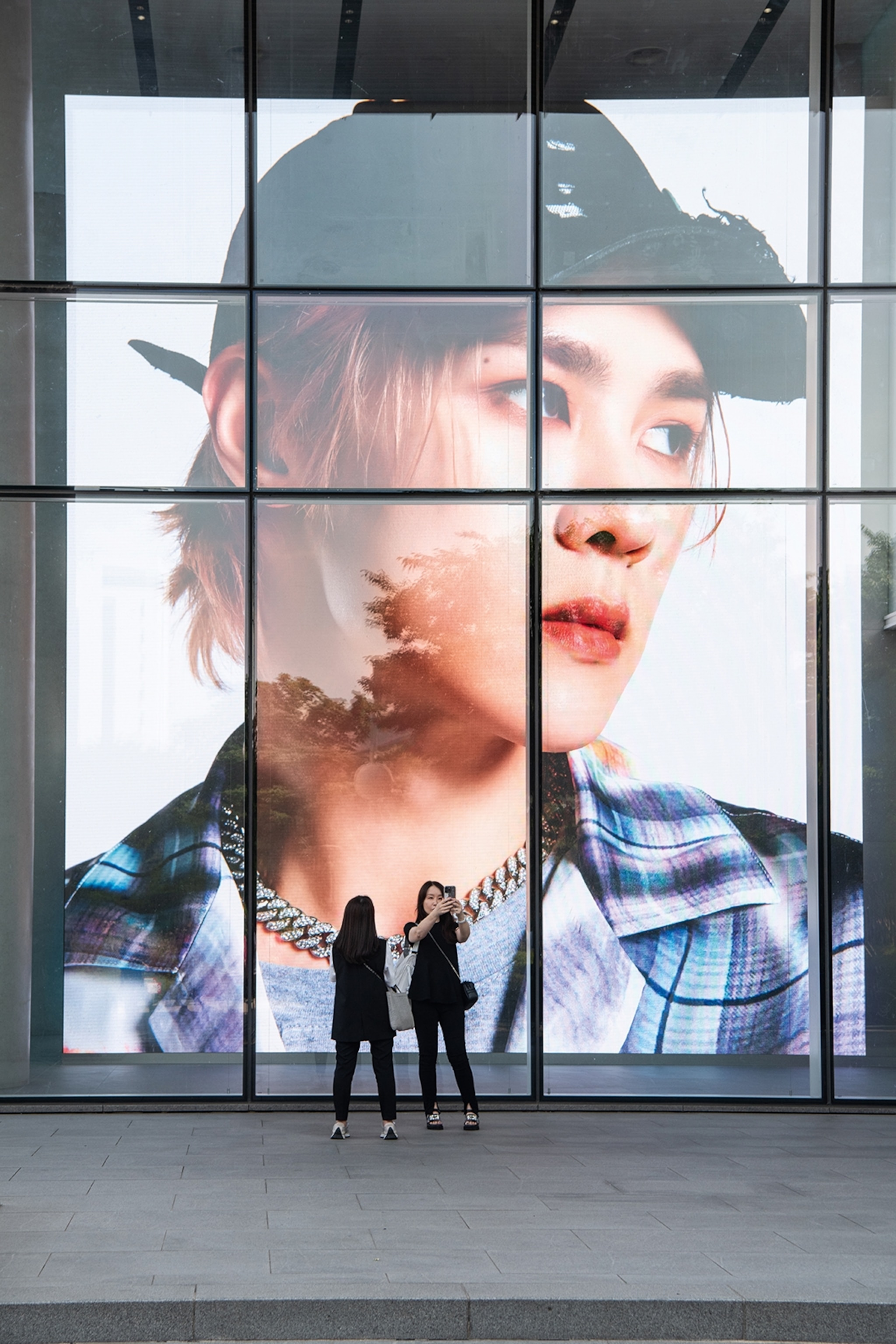
The sun has barely set on another working day in the South Korean capital and already the streets of Hongdae are thronged. Groups of friends weave through the central Seoul neighbourhood, drawn to the bright lights of Eoulmadang Street, its paving covered in colourful murals. Here, the groups disperse, heading to their chosen entertainment for the night. Some stop at the first pub they come to, settling at outdoor tables for beer and fried chicken. Many keep strolling, pausing to look at the displays of cheap fashion stores or pick up ice-cream-filled waffle cones from a food stand. Others check their hair and makeup then pile into the booths of novelty photo studios, clutching props of outsized hats and plastic sunglasses. And extroverts dance and belt out songs at the floor-to-ceiling windows of karaoke rooms, enjoying the attention of bemused passersby.
Crowds congregate around a semi-circle marked on the ground at the top end of the mile-long street. Everyone has their phone out, many have cameras set up on tripods. Those at the back of the six-deep pack stand on tiptoes, straining to see. At the centre of the commotion are five girls in their late teens, wearing grey skirts, black boots and white tops. With shy smiles, they begin — flinging arms into the air, dropping to the floor, twirling hips. Over 45 minutes, they go through routines made famous by K-pop groups such as Ive and Gfriend, mimicking videos watched over and over on YouTube.
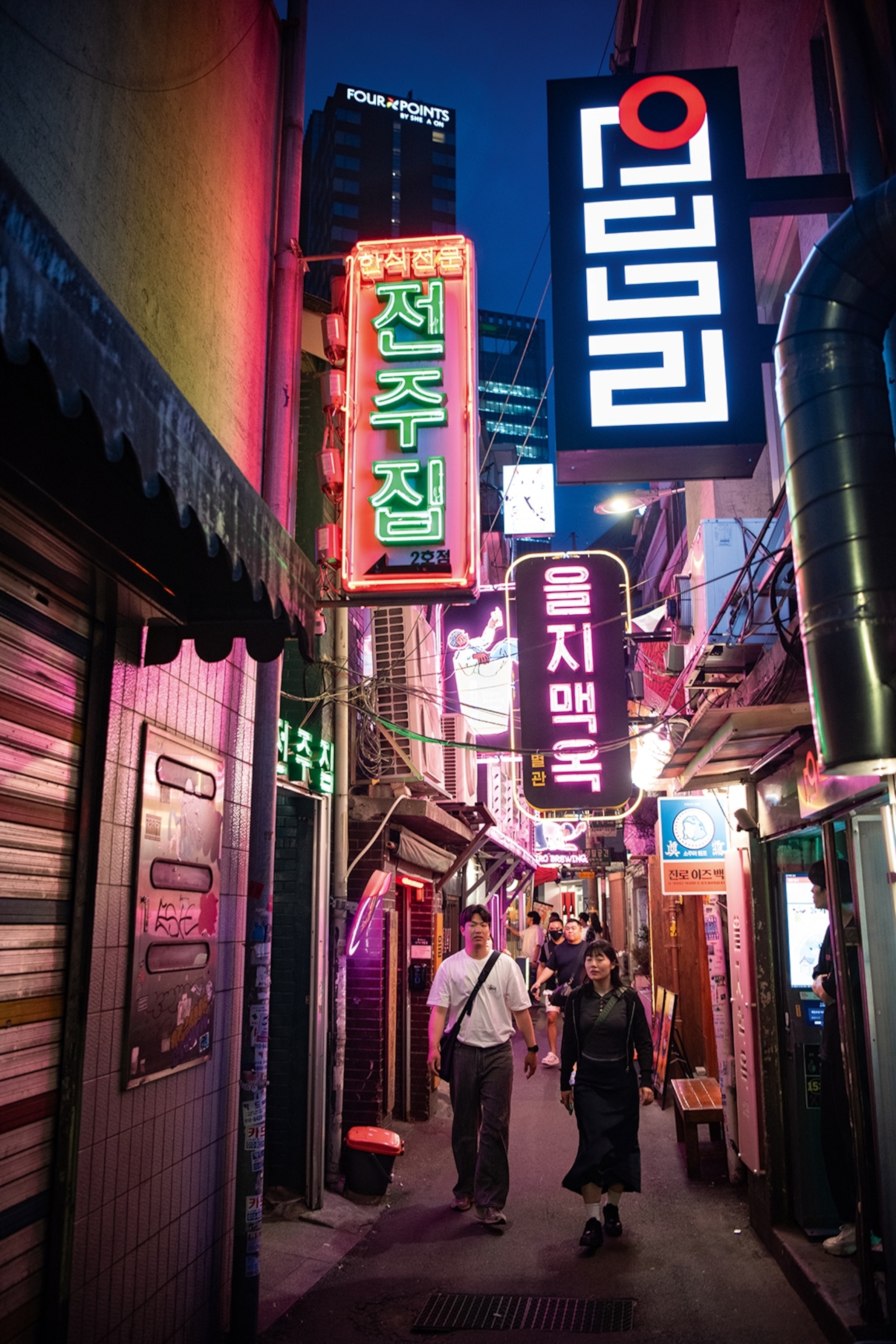
It’s a mark of the continued popularity of K-pop that a dance team recreating familiar routines can pull such a large audience. It’s a passion I come across repeatedly during my few days in Seoul, crisscrossing the vast city on a mission to experience its youth culture in all its many guises. There’s even a complex — HiKR Ground — devoted to K-pop. On my visit to the downtown institution, however, its four floors are given over to an exhibition showcasing a trend that’s just as popular among young Seoulites: gaming, and a player known as Faker.
Specialising in the multiplayer online battle game League of Legends, Faker (real name Lee Sang-hyeok) is as big-time as it gets in South Korea. “People here watch video games the same way you watch a football game,” says my local guide, Yang Yong-su or ‘Ricky’, from Intrepid Travel, as we wander through packed spaces dedicated to the bespectacled star. “They’ll go to a stadium and watch him play.”
Faker is certainly generating as much excitement here as a Premier League footballer might in England. Queues form at interactive displays in which fans are recorded yelling messages of adoration at his giant image or have their photos taken posing against banks of video screens. Many of the exhibits are pleasingly low-fi. Teenagers cluster around a long table, lost in concentration as they draw cartoons of Faker to pin to a wall, or demurely offer a plastic rose to his life-size cardboard cut-out while their friends take pictures.
Nostalgia rules
A love of low-fi extends well beyond the walls of HiKR, I discover on my continued explorations. Vinyl bars and record shops are scattered across the city, with the racks in the latter revealing a particular affection for film soundtracks. At venues like Hills & Europa, a dimly lit space on a side street in the Yongsan neighbourhood, there are more LPs behind the bar than spirit bottles. Twentysomethings perch at small tables, faces illuminated by candlelight, filling the room with happy chatter as a DJ cycles through disco-funk, Motown and 80s classics.
Back across town in Hongdae, Stereophonic Sound takes analogue appreciation a step further. On a lane near Seoul’s arts university, the pared-back cafe-bar and lifestyle shop has the requisite vinyl behind the counter, and a young server who on my visit slips seamlessly between ‘barista’ and ‘DJ’ as required. On one wall, however, beneath a sign advertising a ‘sound rental service’, hang less expected items: Walkman-style cassette players, complete with orange-foam headphones.
As I browse shelves of tapes, a young woman in an Adidas tracksuit comes in and grabs the Pulp Fiction soundtrack and a cassette player, taking them out into the sunshine with her iced americano. The service is free with a drinks order — the only stipulation that the machines are returned within the hour.
Vinyl also fills the racks behind the counter at Hakrim Dabang, north east in Jongno district, but the vibe in the coffee shop is anything but pared back. Everywhere there’s something to catch the eye: black-and-white photos of old-time Western musicians clutching saxophones or violins; a bust of Mozart; an upright piano; battered hardback books. A gathering place for artists and free-thinkers since 1956, the interior has changed little since, with low seating divided into booths and a mezzanine level up near the ceiling rafters. The customers, however, have — mainly students from a nearby university campus, they sit tapping at their laptops, earbuds in, milkshakes within grasp.
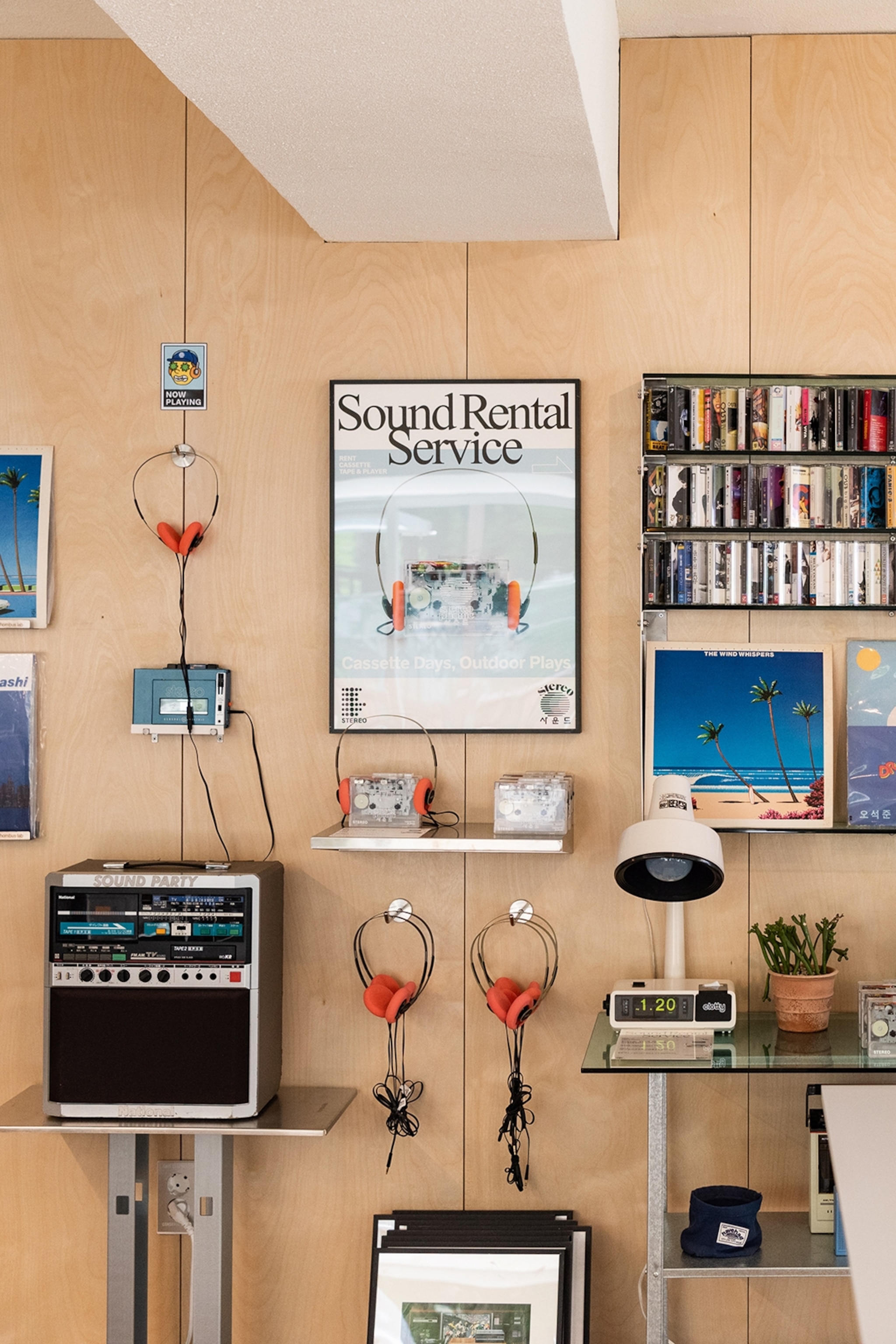
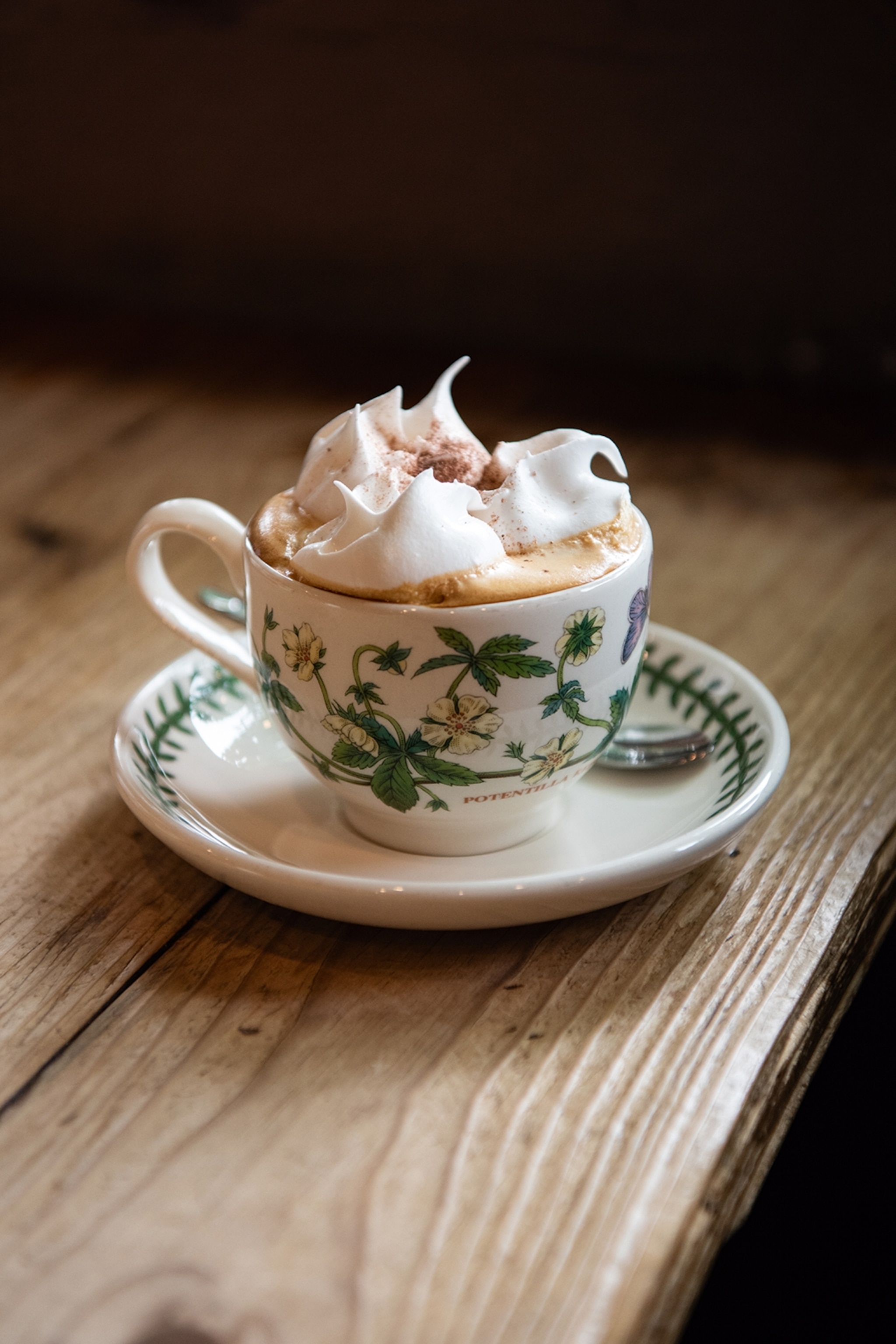
With a waltz playing in the background, I order Hakrim Dabang’s signature coffee — a Vienna, topped with peaks of cream and served in floral china. Server Park Mi-young, in an impressively clean apron, hazards a guess at its popularity. “Maybe young people have only ever seen this sort of place on TV before and they want a new experience,” she says. “They want modern coffee but they like the atmosphere of the olden days.”
Thankfully, the atmosphere of the olden days isn’t in short supply in Seoul. Of a similar vintage to Hakrim Dabang is Shinheung Market in Haebangchon, south of Jongno. Curled around the southern foot of Namsan Mountain, with views of its defining feature, the N Seoul Tower, appearing above the rooftops, the district was once home to the city’s poorest, including those displaced by the 1950-1953 Korean War and migrants defecting from North Korea. For 40 years, they did their grocery shopping at the market here, before it became too rundown and closed.
A regeneration project swept through the district in the 1990s, and the market reopened under its new name in 2021. The old signage and haphazard breeze-block structure of the original remain, but the small units lining its narrow alleys now house vintage stores, noodle restaurants and bars. I slide back the door of one, Gil Bar Dak, and step into a dark space festooned in fairy lights and Santa decorations — revealing an admirable commitment to Christmas, given it’s June. Here, among groups of young friends, I meet a couple in their mid-30s enjoying a date-night bottle of wine. “It’s our first time in the area,” says Mun Ji-suk, immaculate in a white dress and cardigan. “We wanted to come and feel the atmosphere that young people enjoy!”
Novelty value
Mun Ji-suk might also like the atmosphere of Euljiro, on the northern side of Namsan Mountain. The area is going through a process of change, too, its sheet-metal factories moving out, bars and restaurants sweeping in and skyscrapers going up. On a Friday night, it’s packed with people in their 20s. They crowd rooftop bars and amble along narrow lanes cluttered with vintage neon signs and tangles of telegraph cables.
Many pass by a vending machine on a lively alley, unaware that it conceals a door to The Ranch Brewing, a craft-beer pub serving local brews. Even more miss the nondescript entrance to Ghiwon22, not realising they’re bypassing one of Seoul’s best cocktail bars. Beneath a vaulted ceiling, with jazz versions of Coolio and Nirvana songs playing over the speakers, black-shirted staff serve drinks that come with a large side order of theatre. The signature cocktail — made with bamboo liqueur — arrives in an elaborate ceremony that involves the transfer of liquid between multiple ceramic bowls and an abundance of dry ice.
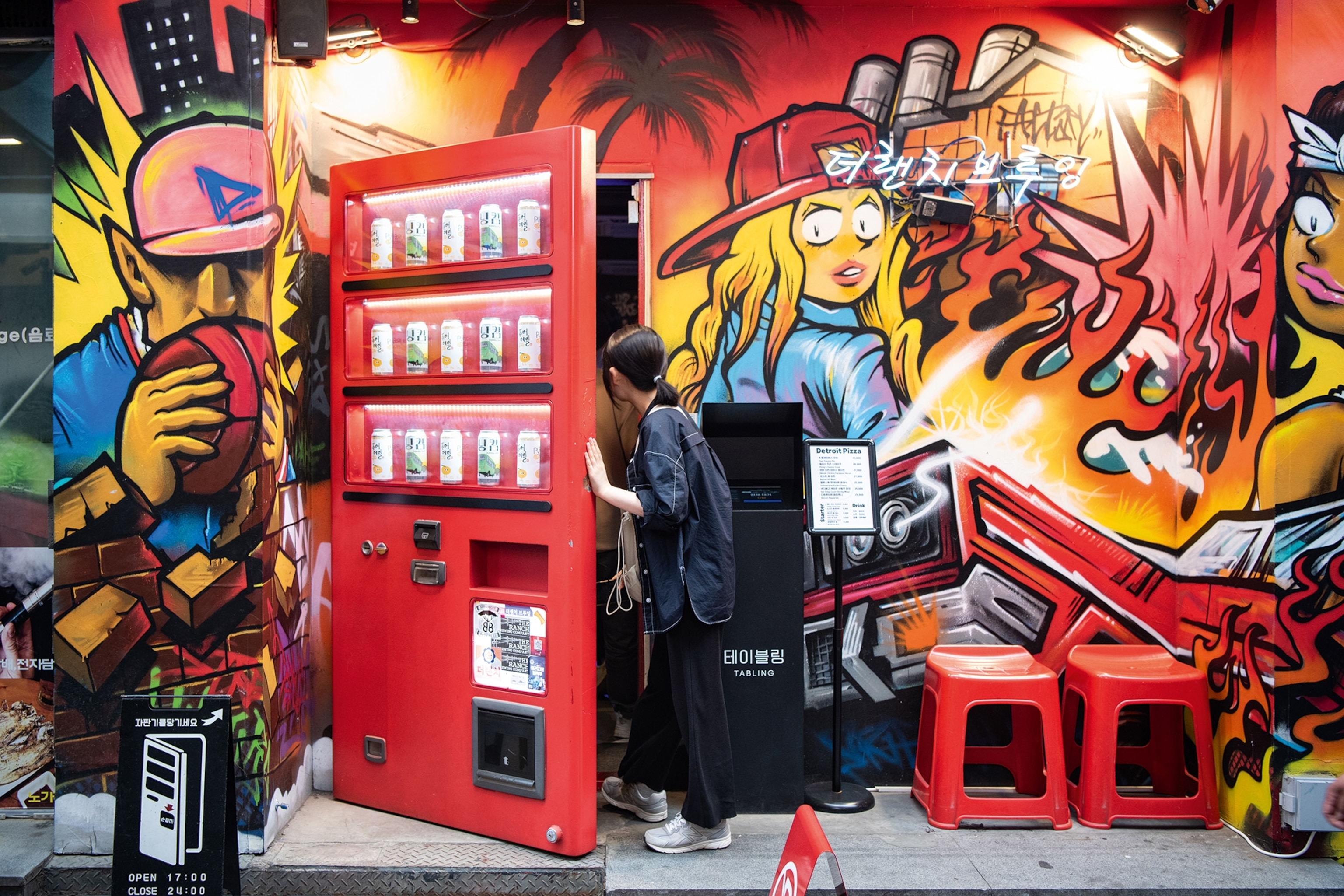
Appealing to a generation hooked on TikTok and Instagram, Seoul is full of venues offering this kind of unique visual drama. In the north of Gangnam district, which was made famous worldwide by the Psy song, Nudake seems more art gallery than cafe, and its desserts are designed to provoke: croissants look burnt to a cinder but are made from black squid ink; tomatoes turn out to be jelly-covered cakes once split open; and gorgonzola cheesecakes arrive with guns imprinted on their wobbling tops. No one can resist taking a photo before digging in.
It’s a similar scene at Overdeep. On the fringes of Hongdae, the cafe is themed around the ocean, with an electric-blue facade and interior, sea creatures hanging from the ceilings and screens showing videos of gently wafting jellyfish. Young customers take time getting pictures, posing as if underwater, before ordering the signature lemonade (blue, of course) and corn cream madeleines. At nearby Mocomoco — all gingham fabrics and country-kitchen styling — punters in Nike Airs and baseball caps join teddy bears at the tables and tuck into custard puddings and flavoured sodas. “This kind of cute interior is very popular in this area now,” owner Lee Just-hee tells me, as I order a cherry soda. “We get so many teenagers and dating couples in.”
One of the newest entries in Seoul’s ‘unusual cafe’ charts, Rain Report takes things one step beyond. It’s housed in what looks like an upmarket residential building in Namsan — where butchers, opticians and tiny shops selling rice cakes coexist with coffee roasters, vinyl shops and craft beer bars, and older residents sit out on the steep streets to chat.
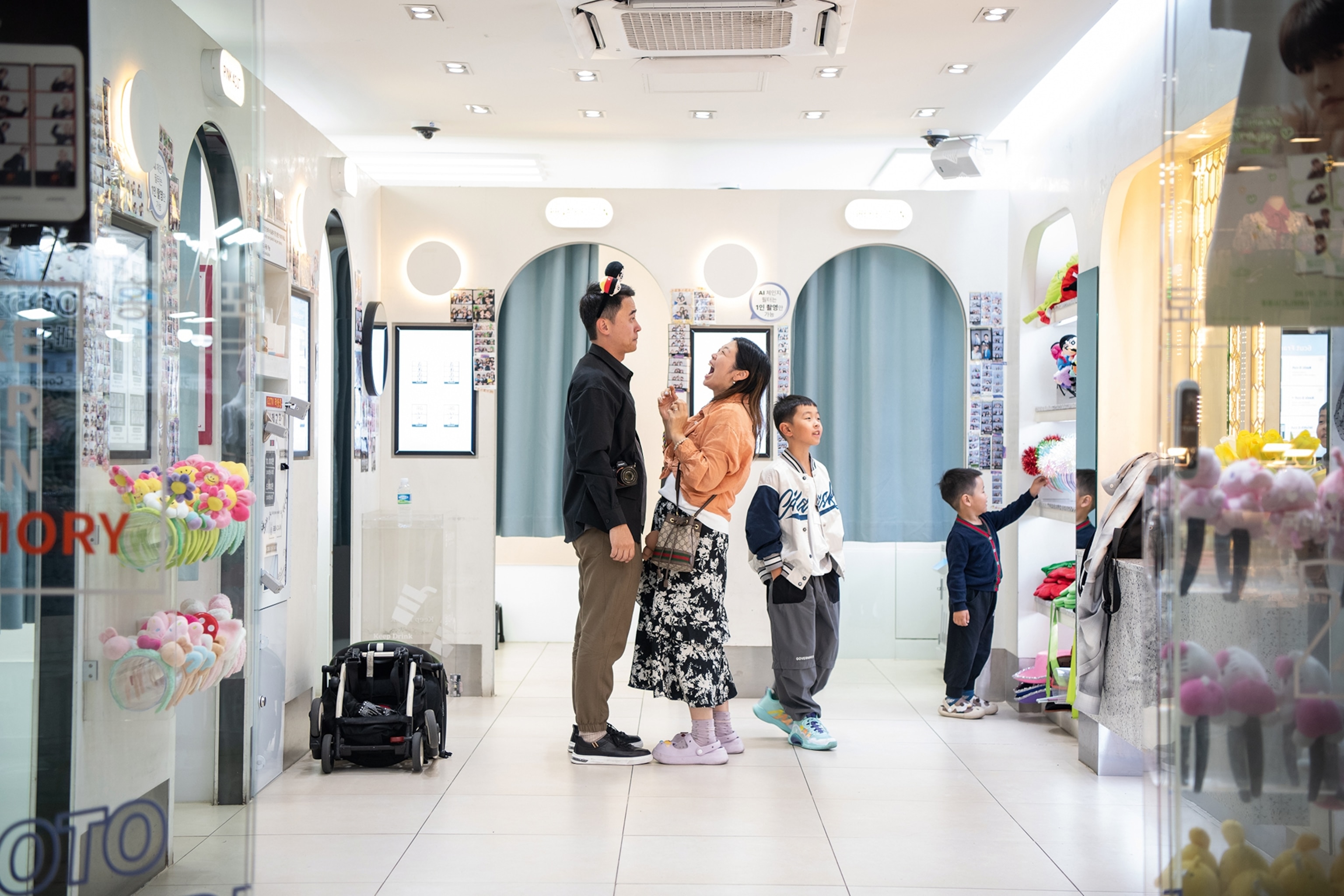
Its two floors are dark, restrained affairs, with black walls and furniture. An installation of video screens shows the weather forecast for countries where the cafe’s coffee beans originate, from Peru to Ethiopia. Outside, tables are placed round a shallow pool with stepping stones running across the middle. It’s a model of grown-up sophistication — until the clock strikes at 15 and 45 minutes past the hour. Then a torrent of ‘rain’ is released across the pool from above, to the excited screams of everyone sitting around it. Customers grab clear plastic umbrellas and run under the water for photos, moving swiftly through well-practised poses, from ‘coy side glance’ to ‘flamboyant leg kick’.
I meet Kim Min-ji and Gack Ye-rim inside, fresh from their own modelling session. “We saw this place on social media and had to come and check it out,” Gack Ye-rim explains. Flawless in a short black dress and cream cowboy boots, she tells me they both dressed up especially. “We knew what shots we wanted to get before we arrived.”
When I ask why Seoul is such a great place for young adults like her, she thinks before replying. “It’s just a good city to have fun in,” she says. “You go 30 minutes in any direction and there’ll be something new to enjoy.” With that, I leave them to their coffees, not entirely sure where to head to next but certain something unexpected awaits.
Intrepid Travel has a nine-day Premium South Korea small-group tour, travelling on a round trip from Seoul, including two days in the capital, transfers, guiding, some meals and some activities, from £3,544 per person. Excludes international flights.
This story was created with the support of Intrepid Travel.
To subscribe to National Geographic Traveller (UK) magazine click here. (Available in select countries only).

